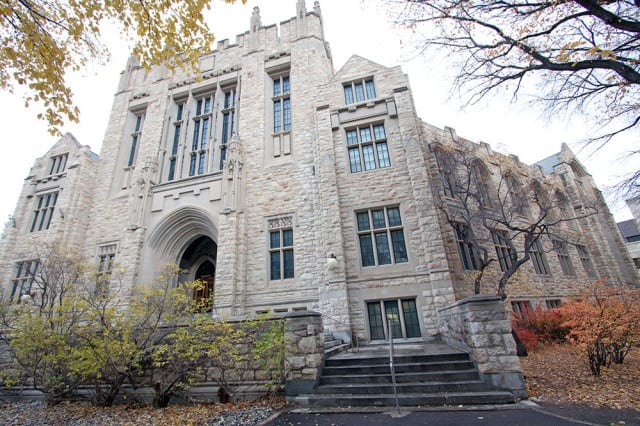CASEY BALON

The College of Pharmacy and Nutrition resides in the Thorvelson Building, though some classes take place in the new Health Sciences Building.
As the University of Saskatchewan’s College of Pharmacy & Nutrition initiates plans to evolve the bachelor of science in pharmacy (BSP) program into the doctor of pharmacy (Pharm D) program, students are left to question the impact of such a change.
Overall, this move is a positive step for the profession, but more studies should be done before the college commits to changes that are accompanied with numerous unanswered questions.
2008 marked the release of the Blueprint for Pharmacy, a collaborative initiative designed to catalyze and facilitate the changes required to strengthen the profession’s alignment with the health care needs of Canadians. Concisely, the profession united to realize the common vision of providing optimal drug therapy for Canadians through patient-centred care.
It is obvious that many pharmacists are still underutilized, existing as an important resource that has yet to be fully tapped. With changes in scope of practice, however, the roles of pharmacists have been expanding. Studies have provided extensive evidence proving that patients receive more optimal care when pharmacists practice within expanded roles and are more involved in the provision of care.
It is this vision that has steered the profession towards greater involvement in providing clinical services in recent years. Advanced clinical care provided by pharmacists brings forth inquiries regarding the need for expanded roles. Herein lies the movement towards doctor of pharmacy programs across the country.
Pharm D programs provide intensive hands-on clinical training, aiming toward producing graduates who will deliver the enhanced scope of practice called for by the country’s healthcare system — this is a good thing.
With professional doctor of pharmacy degree programs already in place at the University of Waterloo, the University of Toronto, McGill University and the University of Laval, the U of S will not be the first to introduce such a curriculum. Post-baccalaureate Pharm D’s have also been offered by the University of Alberta, the University of British Columbia, and the U of T.
The college’s aim is to graduate the first class of U of S Pharm Ds in 2020. Until then, pharmacy students will continue to convocate with a Bachelor of Science in Pharmacy. Many are left to wonder where their BSP will stand amid the future sea of Pharm D graduates. Some are skeptical of the validity of introducing a new entry-to-practice degree, while others are optimistic that the change will aid in the attainment of the vision for pharmacy.
Some say advancement of the current curricula is critical and inevitable in order to produce grads who will be capable of fulfilling the ever-changing roles of pharmacists. Others suggest that incremental improvements in care could be accomplished with the evolution of the current BSP program. Many grads already go on to achieve additional training through various residency programs and specialities.
When it comes down to it, numerous questions are left not fully answered. Will the implementation of the Pharm D program in Saskatchewan further propel the evolution and expansion of a pharmacist’s scope of practice? Will this new degree promote involvement in specialized care sectors? Are we facing another case of credential creep or are we talking about improving standards of care and outcomes for our people?
The world of pharmacy at the U of S is changing. You can sit by and watch or hop on board and contribute to the endeavor. Regardless, it’s important to be critical of these changes every step of the way.
—
Photo: Jordan Dumba/Photo Editor